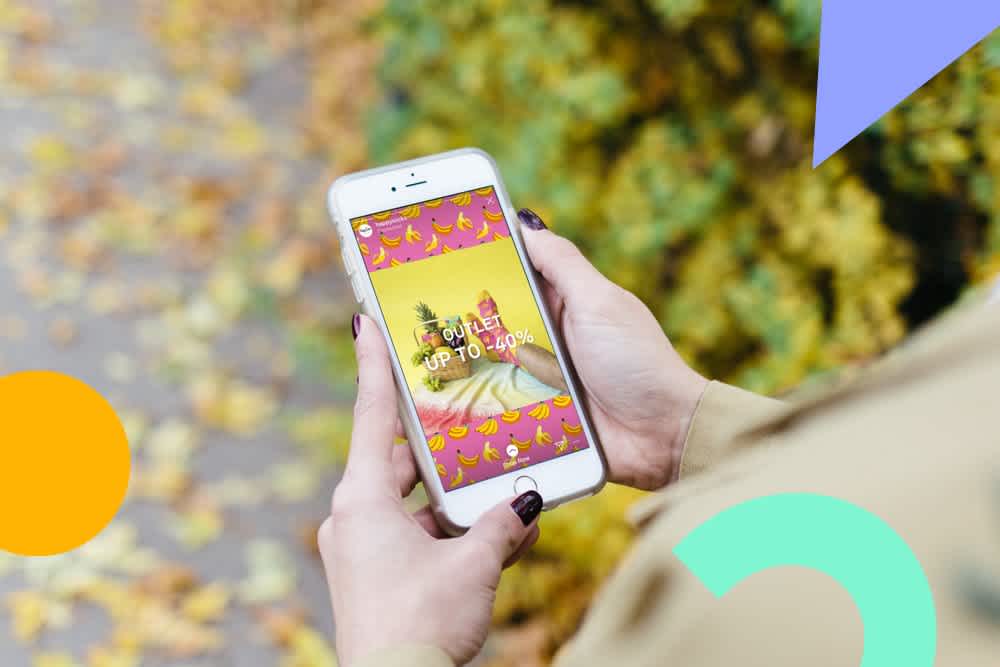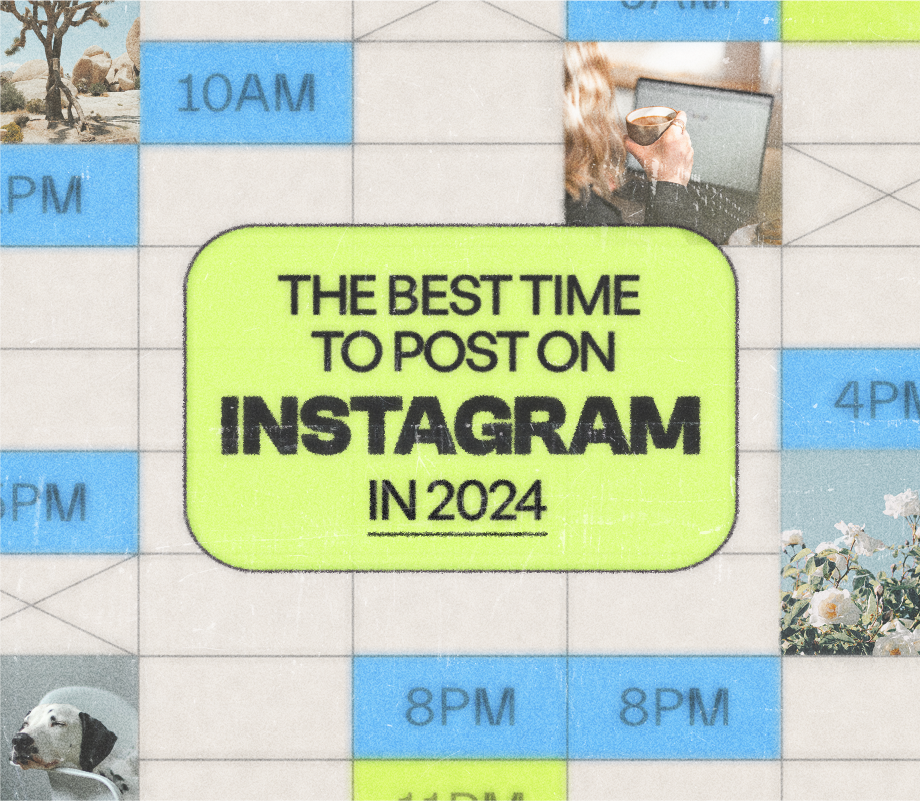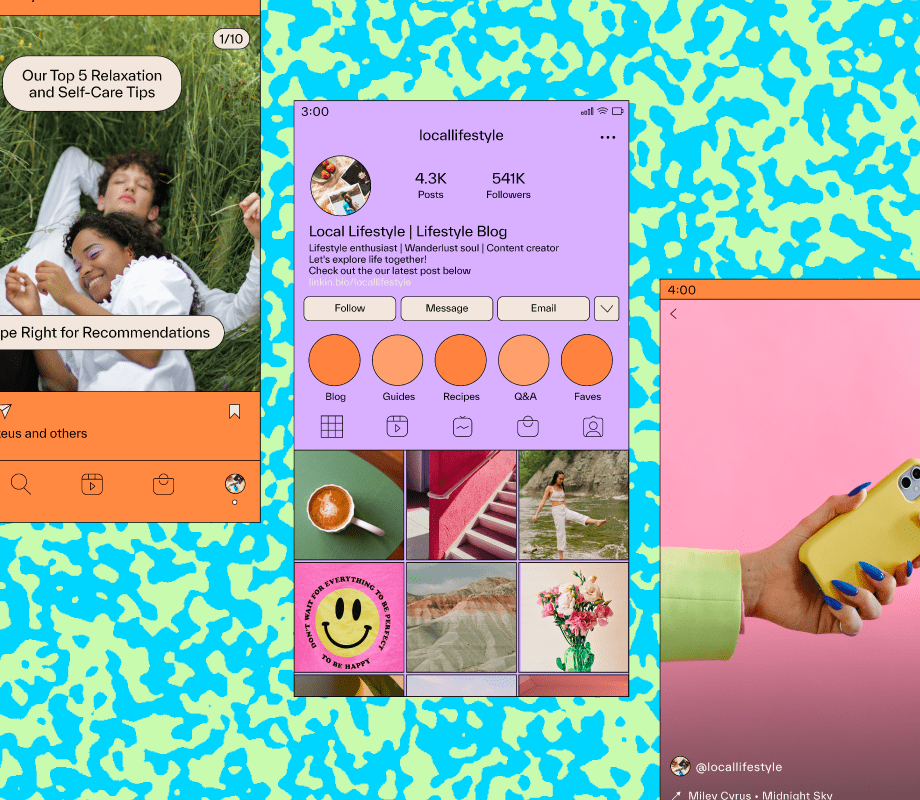Want to grow your Instagram account and get more sales from your feed? It’s time to launch your first Instagram ad campaign!
There are 2 million monthly advertisers on Instagram, and Instagram advertising is a great opportunity for small businesses to create engaging ads to target the right audience and convert into sales.
And the best news is that an Instagram ad campaign doesn’t blow the budget — all it takes is a little bit of planning, testing, and creativity!
If you haven’t run an Instagram advertising campaign before, don’t worry: h**ere’s everything you need to create, launch, and measure the success of your first Instagram ad campaign!**
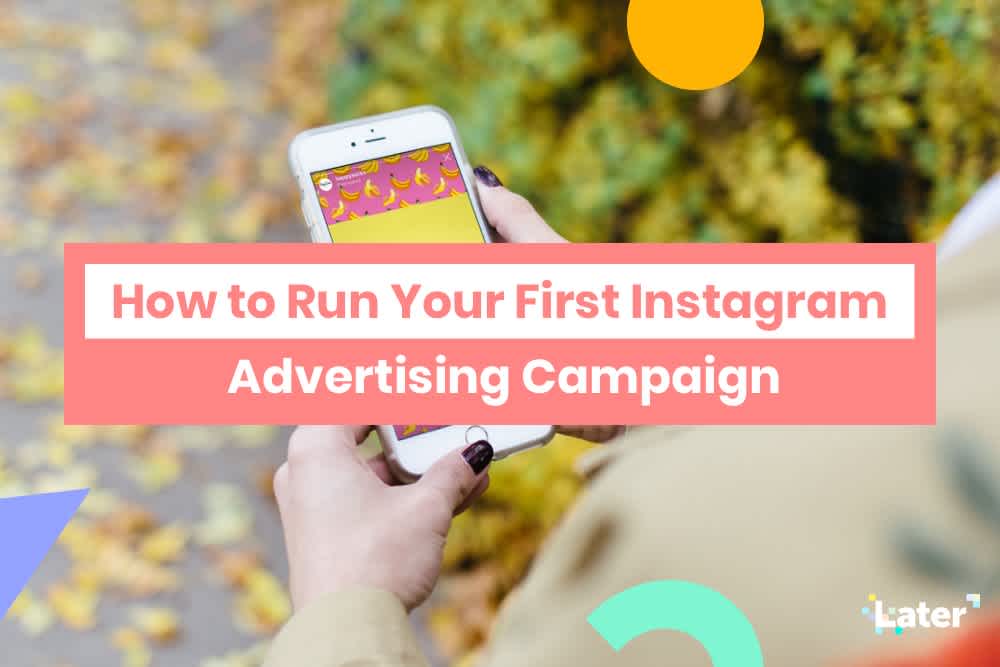
In this blog post, we’ll cover the 7 steps to running an Instagram advertising campaign, from setting your goals to creating your target audience, choosing an ad format, measuring your success, and more:
Step #1: Choosing Your Instagram Ad Campaign Goal
The first step to creating your Instagram ad campaign is to focus on what you want to sell or promote, as well as your reasons why.
There’s no point in putting your hard-earned budget into an Instagram ad campaign if you don’t know exactly why you want to run it!
Maybe you’re launching a new product, or promoting a special event or seasonal sale. Whatever your specific goal, spend some time thinking about why you want to advertise on Instagram and how you’re going to do it.
Start by setting your Instagram ad campaign goal. Is it sales driven? Then your goal would be conversions. Or do you care more about gaining brand exposure? Then your goal could be engagement or followers.
Once you have a clear goal in mind, your campaign’s content, target audience, and format should be organized to achieve that goal.
Remember: Instagram uses Facebook’s advertising platform to run all their ad campaigns. So any ad setup, goal setting, budgeting, and creation is all through Facebook Ad Manager!
Looking for help getting set up with Facebook Ad Manager? Check out our step-by-step guide to creating Instagram ads.
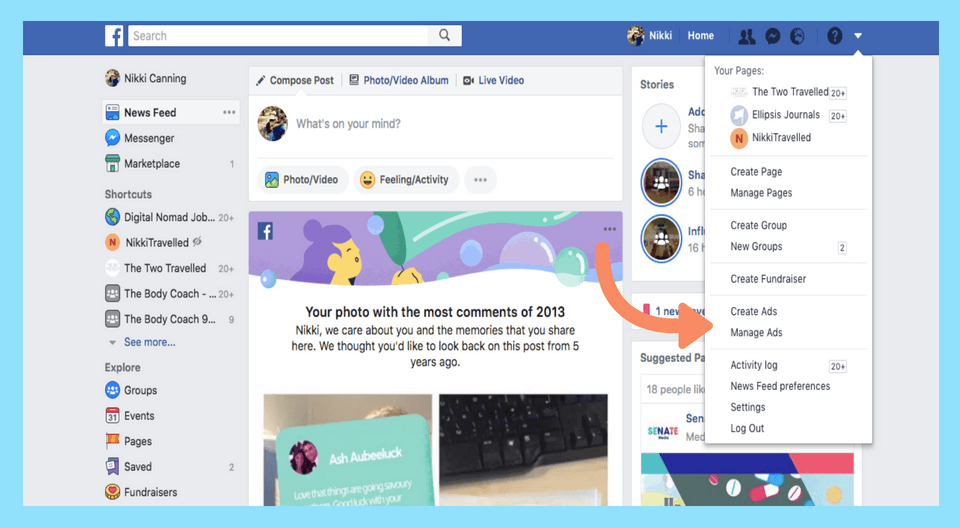
When you’re setting up your Instagram ad campaign, you can choose a goal for your campaign. Campaign goals include:
Brand awareness
Reach
Traffic (for clicks to your website or to the app store for your app)
App installs
Engagement (for post engagement only)
Video views
Conversions (for conversions on your website or app)
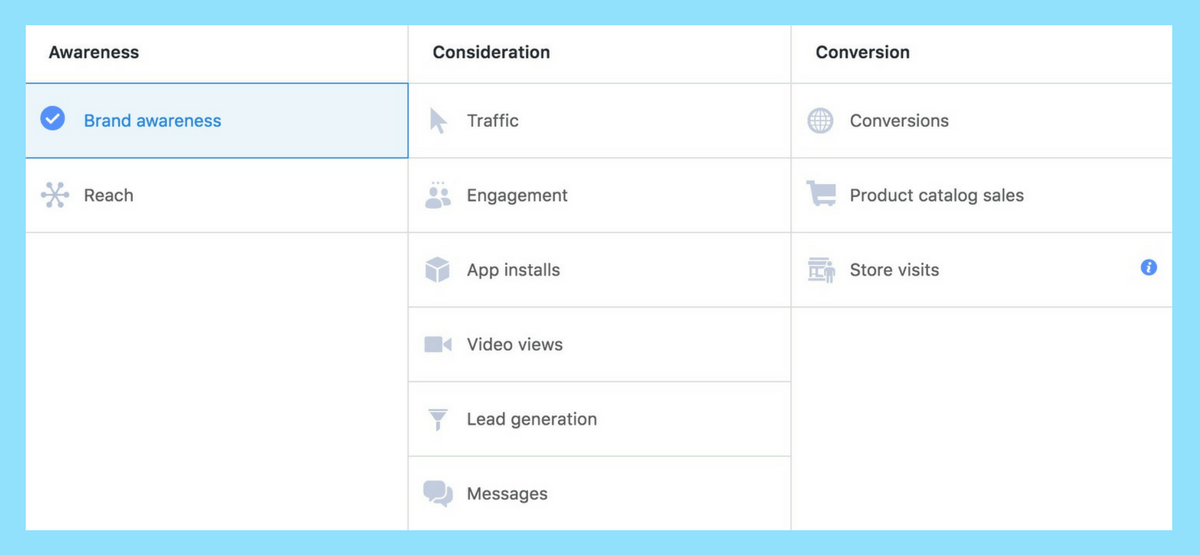
Now that you’ve set your goal of your Instagram ad campaign, you can start defining your target audience!
Step #2: Choose the Target Audience for Your Instagram Ad Campaign
Now that you have a goal for your campaign, it’s time to set your target audience!
Start by looking at your Instagram analytics. They’re a goldmine for information about your audience, and you can use that info to discover niche audiences that you may want to reach out to.
Let’s use a skincare brand as an example: the business already has a good female following on Instagram, but they’re about to launch a collection for men. A good strategy would be to take a look at the age range and location of their male following, and they might want to review the age ranges of their female following.
If they have a large teen base, a Father’s Day Instagram ad campaign could work well to get their female teen followers to purchase the product for their dad. Or, if they’re in the older age brackets, a message targeting gifts for husbands and partners could work better!
Once you’ve analyzed your Instagram analytics and fine-tuned who you want to target with your Instagram ads, you can set parameters for your Instagram ad campaign through Facebook Ad Manager.
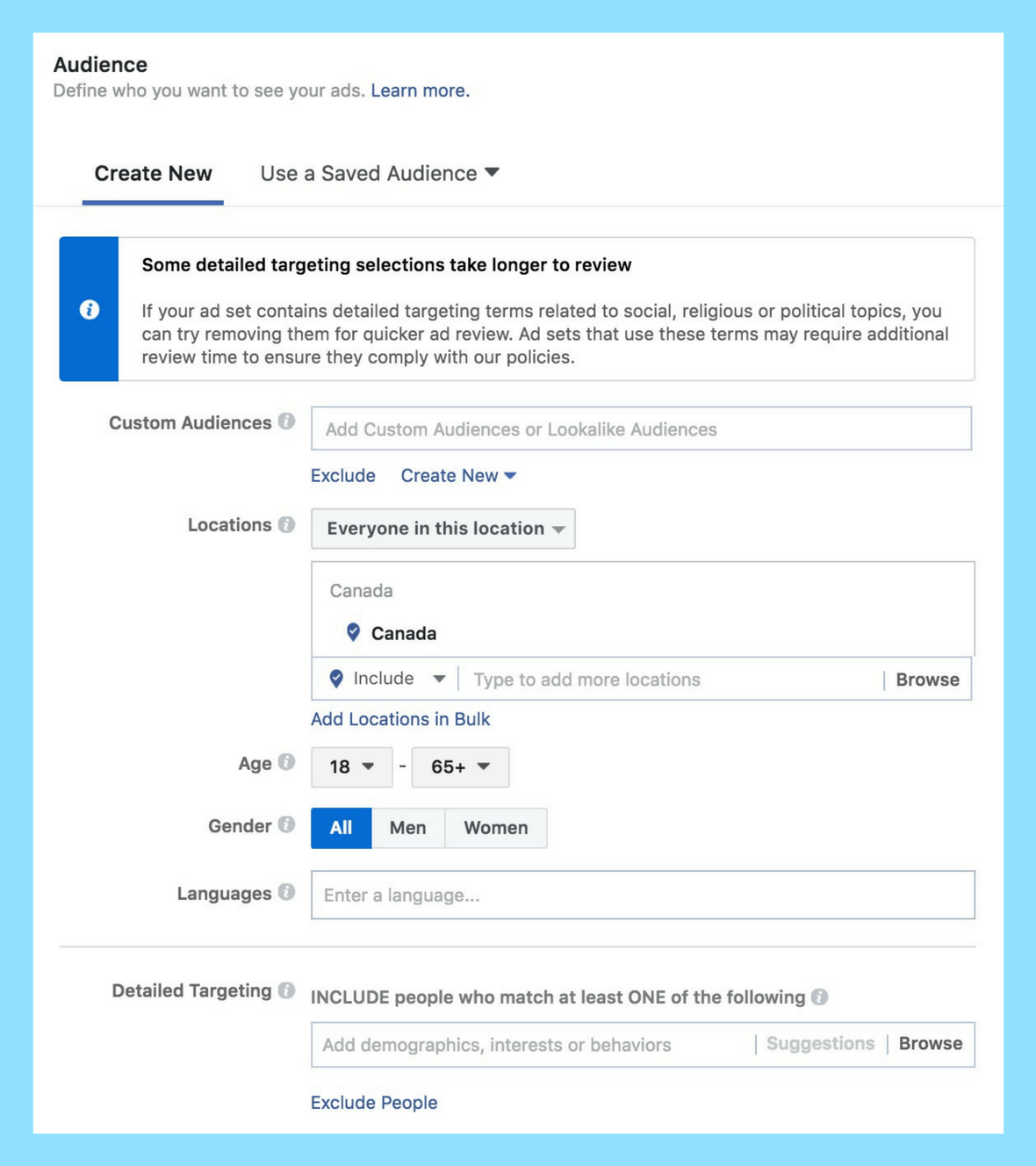
There are options to set your audience based on age, gender, locations, interests, and even who they’re connected to on Facebook!
If this is your first campaign and your goal is to boost brand awareness or reach, a wider audience might better serve your budget. If you make your target audience too narrow or niche, you could miss out on putting your ad in front of the masses.
Just remember that your target audience, goal, and ad format are all related — you can’t set a target audience if you don’t have a goal to reach! And the type of ad you run will depend on who your audience is and what kind of content resonates with them.
Step #3: Pick an Ad Format for Your Instagram Advertising Campaign
Just like Instagram posts, Instagram ads come in many different shapes and sizes!
That means that you can pick the best type of ad to suit your audience, goal, and ad campaign message.
Here’s a rundown of some types of ads you can run on Instagram:
Photo and Video Instagram Ads:
This is the traditional one photo or video, feed-style post that comes with a small “sponsored” tag where you’d usually tag a post’s location.
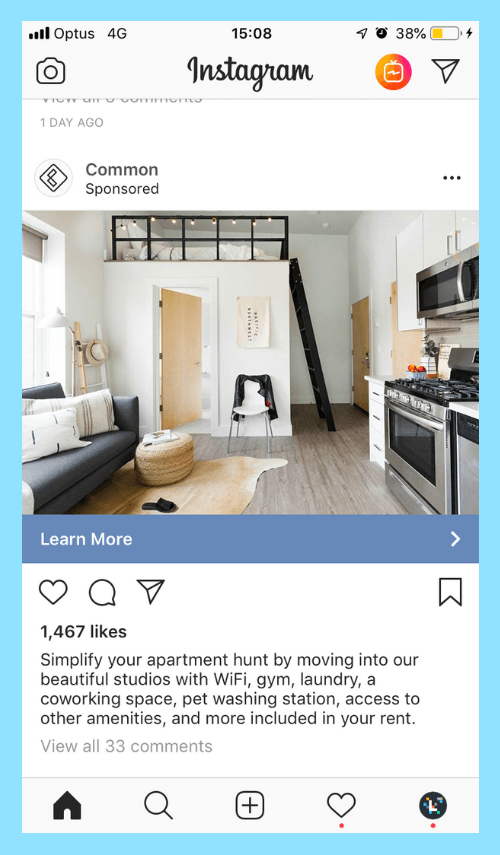
The benefit of this type of Instagram ad is that it flows into your target audience’s feed, meaning they can thumb past your post easily.
But one of the main challenges of this ad type is that it can be difficult to stand out from the crowd. You have fractions of a second to grab the attention of your audience, so you really need to make sure your ad is bold, attractive, and has an effective call-to-action to draw your audience in!
Instagram Carousel Ads
Looking to show off a new collection? Or maybe you’ve got a longer story to tell through great photography or images?
An Instagram carousel ad post with multiple photos might be what you’re looking for!
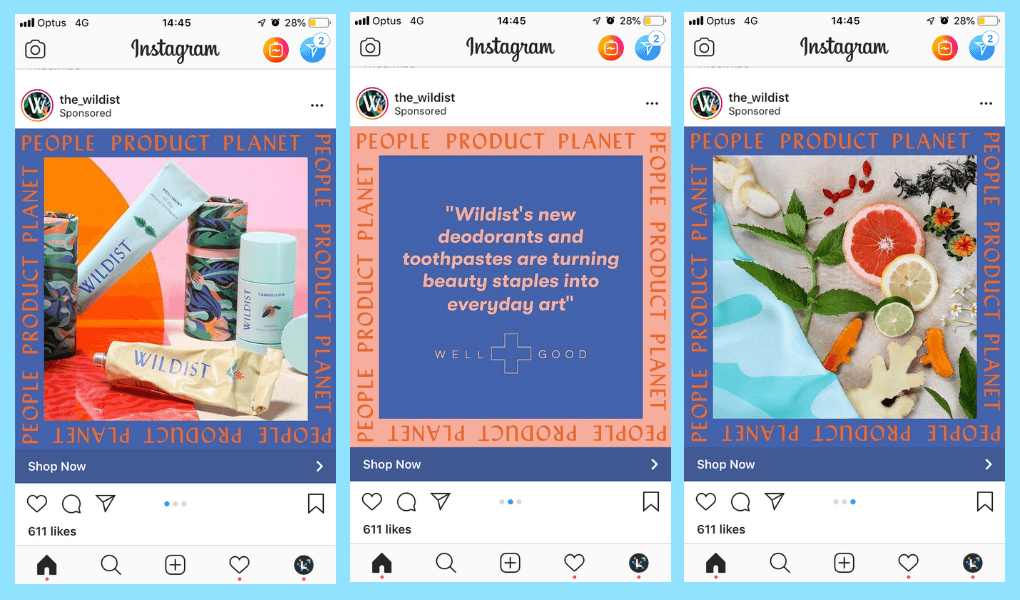
According to research, carousel ads are 10 times better at getting people to click-through compared to static sponsored posts.
With an Instagram carousel ad, your audience will be able to thumb through up to 10 photos and get a great introduction to your brand or product!
Carousel ads are a great cost-effective way to tell a story about your brand and show off all the best images you have for your campaign. Carousels also allows users to scroll through the cards at their own pace, which is great for more educational content.
Instagram Stories Ads
There are over 400 million Instagram Stories viewers each day, which means that an Instagram ad campaign designed for stories could get you a lot of exposure!
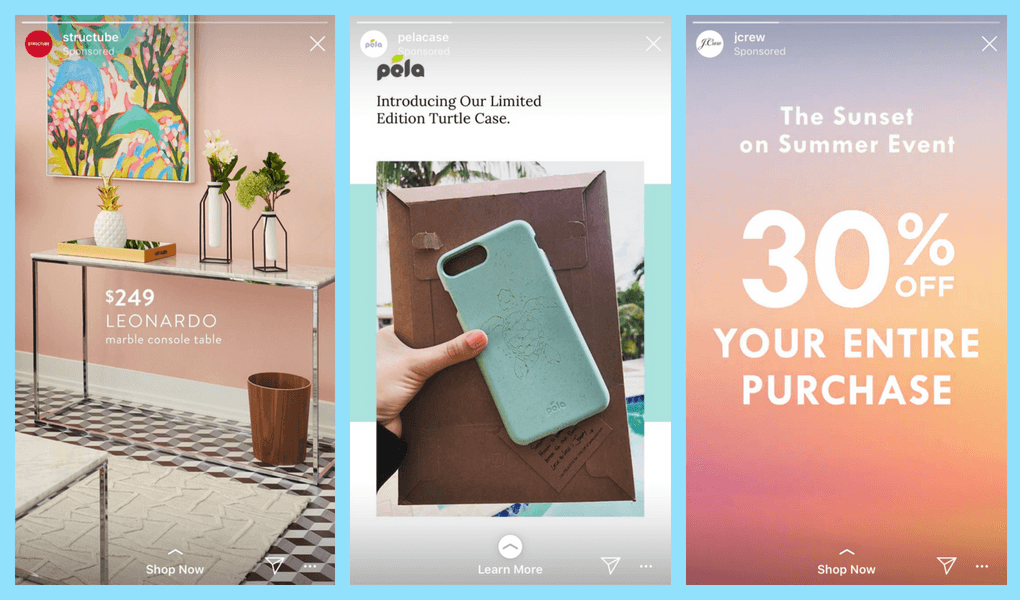
One of the huge benefits of an Instagram Stories ad campaign is that you can create Instagram Stories carousel ads now, too! Instagram Stories carousel ads allow you to post 3 consecutive ads, each 15 seconds long, to build out an ad that looks and feels like a real Instagram story.
Just like carousel posts in the feed, it’s perfect for storytelling, but with the added bonus of being great for video posts!
For more detailed tips about running Instagram Stories ads, you can check out 9 Tips for Creating Instagram Stories Ads that Convert.
Looking to grow your business with Instagram? Download our free Instagram for Business Strategy Guide to help you build a strategy, post great content, and grow an engaged audience online:
Step #4: Designing Your Instagram Ad
Once you’ve set your Instagram ad campaign goal, your target audience, and decided on which ad format you’re going to use, it’s time to work on your ad creative!
Now it’s time to think about the wider requirements for your campaign, like the tone of voice you’re going to use, imagery, and how you can be creative with your sell.
Here are a couple of things to keep in mind when creating your campaign:
Make your ad copy direct and concise: You only have seconds to grab someone’s attention — if you have to read your own ad copy twice to understand it, it might need some revising!
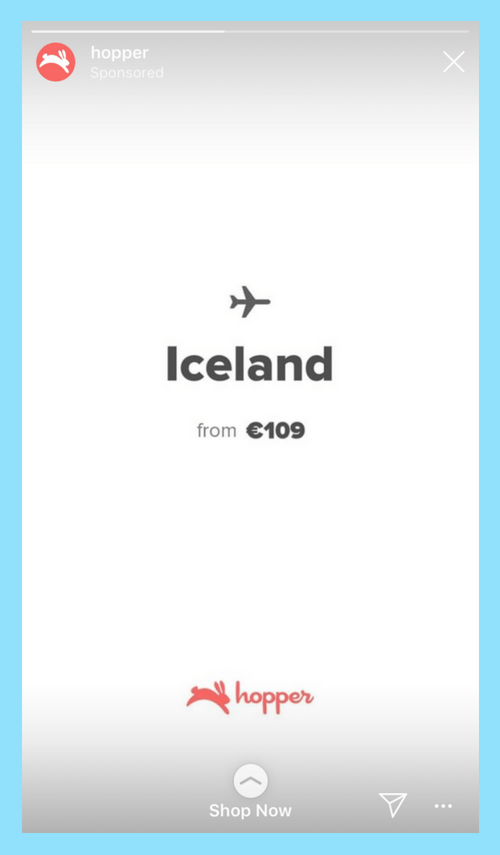
Include your brand logo: If you’re looking to increase your brand awareness and reach new audiences, remember to include your logo as part of your design! It’s so important for boosting brand recognition.
Keep competitions or giveaways simple: Many small businesses like to run a giveaway to build awareness of their brand as their first campaign. If you’re doing a contest or giveaway, make sure that your the challenge isn’t too demanding, as this will this will lead to less engagement.
Have a strong call to action in your ad: Whether it’s an Instagram Stories ad, or a traditional feed post, make sure you direct your audience to where you want them to go, like your website or online store.
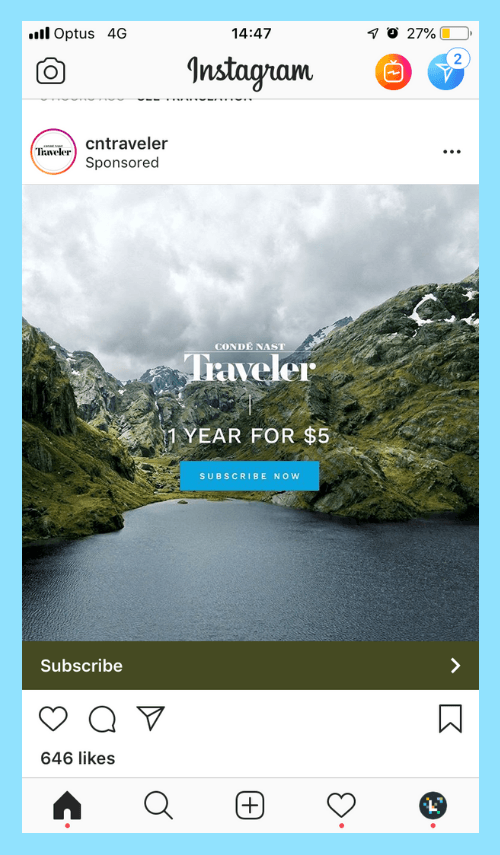
Step #5: Set Your Instagram Ad Campaign Budget
Budgets will differ for every business and for every campaign, but if this is your first Instagram advertising campaign ever, it’s a good idea to be conservative with your spend.
What’s more important is the lessons you learn from your first campaign, and then applying them to the next campaign launch or tweaking your current campaign.
And the good thing about running ads on Instagram is that it won’t ever cost you more than what you choose to spend. You can set your budget with Facebook Ad Manager and it will never cost you more than that amount.
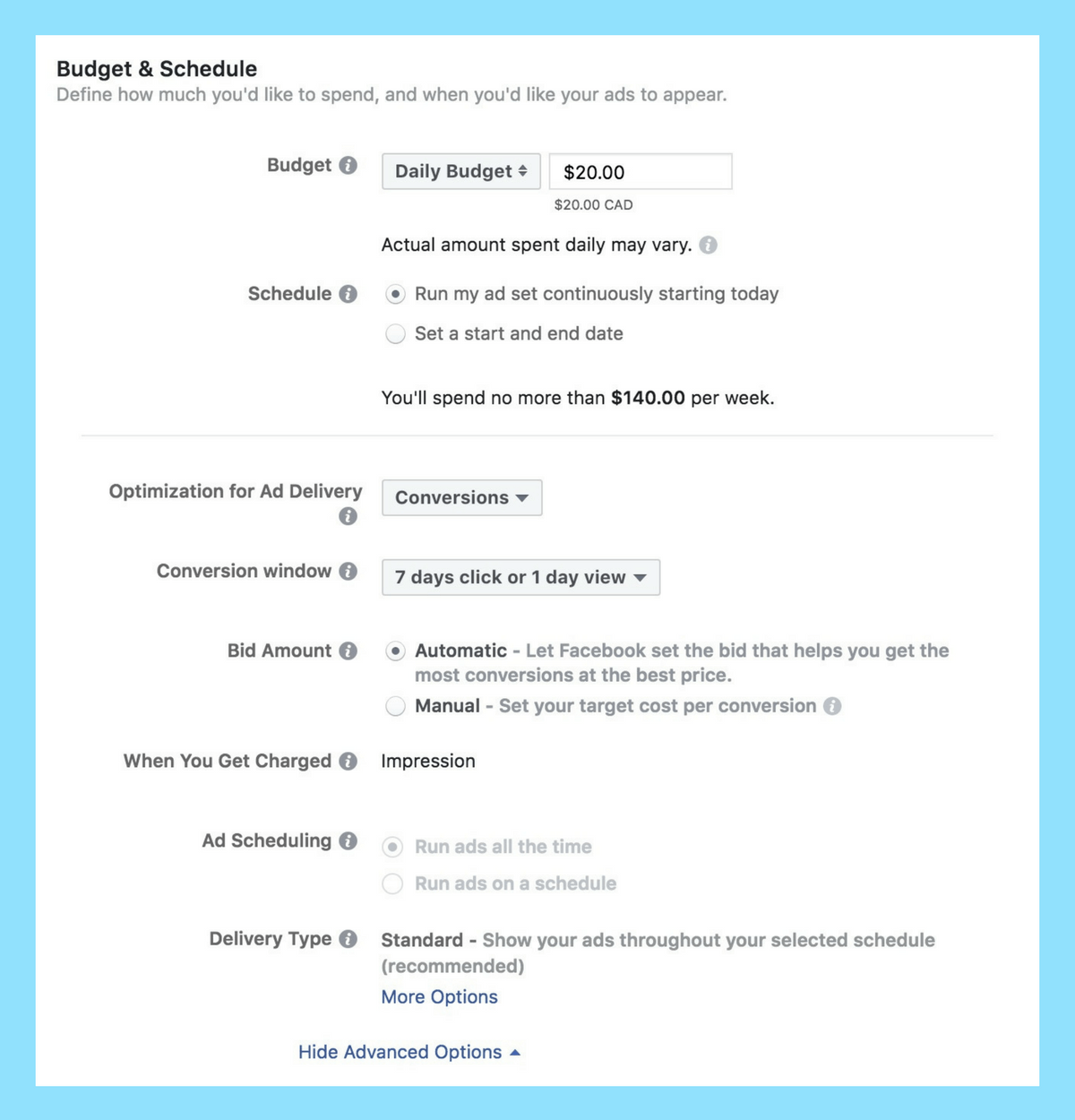
If this is your first campaign, it’s a good idea to keep your budgeting strategy simple as you won’t have any baseline data to compare to.
One simple thing you can decide, however, is whether you want to run an Instagram ad with a Daily Budget (which offers a maximum daily spend), or a Lifetime Budget (which runs an ad with a set lifespan and budget).
Whichever you decide, these can help you manage your spending and plan how long to run the ad for.
Step #6: Test Your Instagram Ad Campaign
One of the best ways to learn if your ad is working for your audience is to set up some Split Testing with Facebook Ad Manager.
Split tests help you understand how different aspects of your ads — like the content, images, or call-to-action — affect the campaign’s overall performance.
It’s also super easy to A/B test your ads! You can easily run different versions of your ads to see what works best and improve your future campaigns!
But before you start setting up your split testing, here are a few things to keep in mind:
Keep it simple: We recommend only testing one element at a time. For example, do not test your creative design, ad copy, and headline all at once. If you want to test your call-to-action, keep everything else constant, and just change the copy. That way you know there wasn’t anything else that could have influenced an uptake in your engagement!
Don’t run too many tests at once: This can really use up a lot of your budget, and if you’re trying to control the purse strings of your Instagram ad campaign, running one test at the time will keep you from breaking the bank.
Use the Statistical Significance Calculator: It allows you to see if your results are significant enough to be carried to your next campaign. Use the Statistical Significance Calculator to verify the confidence level of your results. If your test results show a confidence level of 95% or above, that’s usually a good sign that the winning variation of your A/B test can be carried over to your next campaigns!
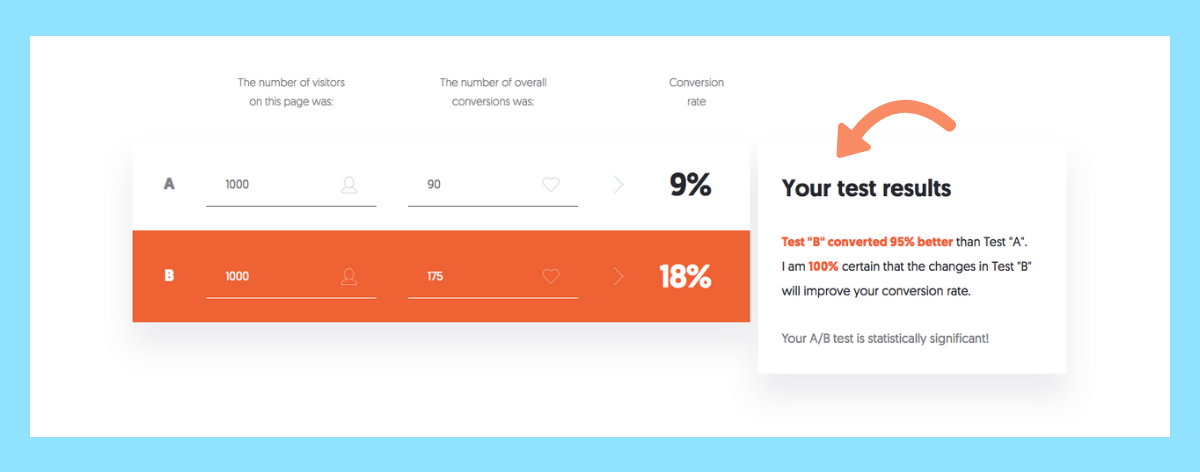
Step #7: Measure Your Instagram Ad Campaign’s Success
A successful Instagram ad campaign goes beyond likes, instead you want to track your progress towards achieving the goal you set when launching your campaign.
But the numbers that can help you determine whether your campaign was a success comes from various places, and it’s worth looking at each to see if you’re satisfied with your Instagram ad campaign’s performance.
Here are a few places to review your Instagram ad campaign’s success:
Facebook Ad Manager: Review the results of your campaign and including reach, impressions, and link clicks!
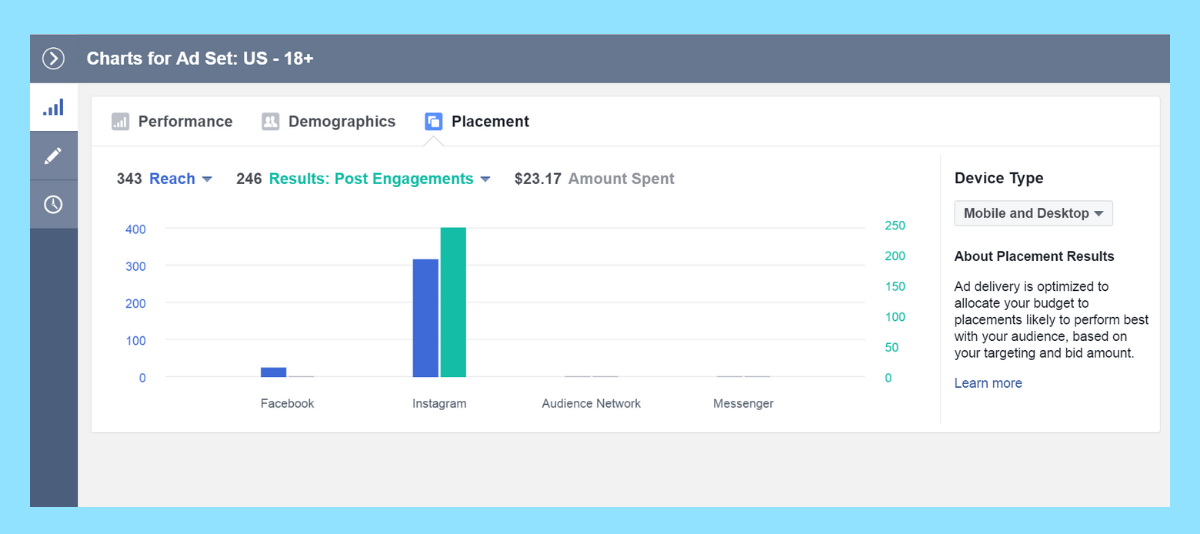
Instagram Insights: Use Instagram Insights to see if your overall engagement and reach has been improved on your account. Perhaps you’ve got more followers or your engagement rate has improved since launching the campaign.
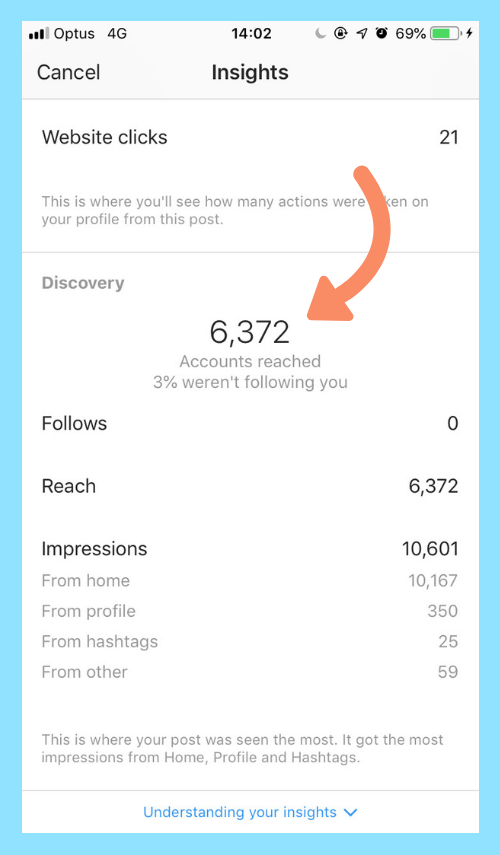
Website Analytics: You may be using Google Analytics or a similar platform to track how many visitors come to your site. If you’re seeing an increase, especially from referral traffic from Instagram, it a good sign you campaign is working.
Your Product Sales: Notice a spike in orders or more clients coming through your door? It could be down to your Instagram ad campaign!
Regardless of where you’re sourcing your analytics, it’s important to regularly record and monitor the success of your campaigns. There is so much to learn from the campaigns that really worked, as well as the ones that flopped, so don’t be scared to track every stage of the process.
We recommend setting up a Google Sheet or Excel file to record the progress and results of each campaign.
And don’t forget to share this with your wider business team — it could also influence and impact other business decisions, like allocating budget or product launches!
That’s it, you’re now ready to set up your first Instagram ad campaign!
It’s natural for your first Instagram ad campaign to be a bit of a learning curve, but these tips will help you get great results, regardless of your campaign experience.
Grow your business on Instagram with Later, the #1 Instagram marketing platform! Plan your feed, schedule posts, optimize your analytics, and more for free:
